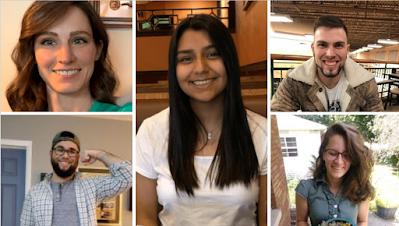
Undergraduate research has come to a close for a couple of months now that the campus has shifted to online operations in an effort to de-densify the campus to ward off the effects of the pandemic. Chemistry majors Naseem Alfadhl (left) and Valeria Robles Madrigal (right) worked with analytical chemist Dr. Muna this semester continuing work they had started in the summer during the pandemic lockdown. Although they were kept out of the laboratory this summer, they were not idle; they conducted many literature searches and evaluations of electroanalytical techniques, methods, and data interpretation used in the detection of electroactive analytes. Finally, this fall they had an opportunity to explore in the laboratory those chemical concepts they had learned over the summer.
Both students spent the fall semester developing and applying the technique of electrochemically depositing metallic nanostructures on glassy electrodes which are then used to detect particular types of analytes contaminating water samples. Their focus was to quantify the effect that the deposition time has on the electrochemical behavior of the coating of the glassy electrodes due to the different nanostructures that result from whether the deposition occurred quickly or slowly. Valeria investigated the metal bismuth (the heaviest of the non-radioactive elements) which leads to detectors suitable for detecting lead ions in aqueous solution. Naseem worked with gold which has a special affinity for thiols (the sulfur analog of an alcohol), particular aminothiols.
















